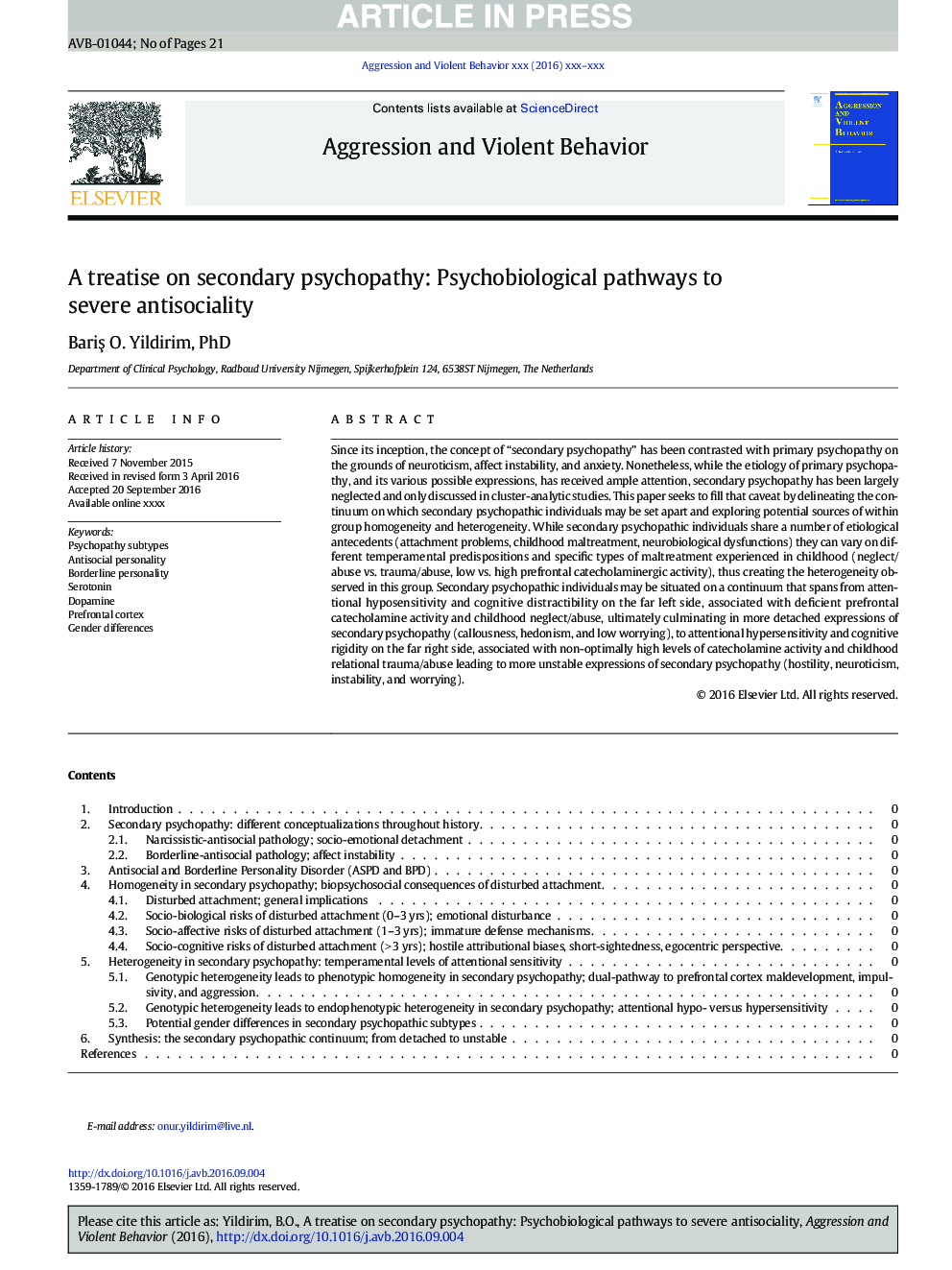| Article ID | Journal | Published Year | Pages | File Type |
|---|---|---|---|---|
| 4760153 | Aggression and Violent Behavior | 2016 | 21 Pages |
Abstract
Since its inception, the concept of “secondary psychopathy” has been contrasted with primary psychopathy on the grounds of neuroticism, affect instability, and anxiety. Nonetheless, while the etiology of primary psychopathy, and its various possible expressions, has received ample attention, secondary psychopathy has been largely neglected and only discussed in cluster-analytic studies. This paper seeks to fill that caveat by delineating the continuum on which secondary psychopathic individuals may be set apart and exploring potential sources of within group homogeneity and heterogeneity. While secondary psychopathic individuals share a number of etiological antecedents (attachment problems, childhood maltreatment, neurobiological dysfunctions) they can vary on different temperamental predispositions and specific types of maltreatment experienced in childhood (neglect/abuse vs. trauma/abuse, low vs. high prefrontal catecholaminergic activity), thus creating the heterogeneity observed in this group. Secondary psychopathic individuals may be situated on a continuum that spans from attentional hyposensitivity and cognitive distractibility on the far left side, associated with deficient prefrontal catecholamine activity and childhood neglect/abuse, ultimately culminating in more detached expressions of secondary psychopathy (callousness, hedonism, and low worrying), to attentional hypersensitivity and cognitive rigidity on the far right side, associated with non-optimally high levels of catecholamine activity and childhood relational trauma/abuse leading to more unstable expressions of secondary psychopathy (hostility, neuroticism, instability, and worrying).
Keywords
Related Topics
Health Sciences
Medicine and Dentistry
Forensic Medicine
Authors
BariÅ O. PhD,
